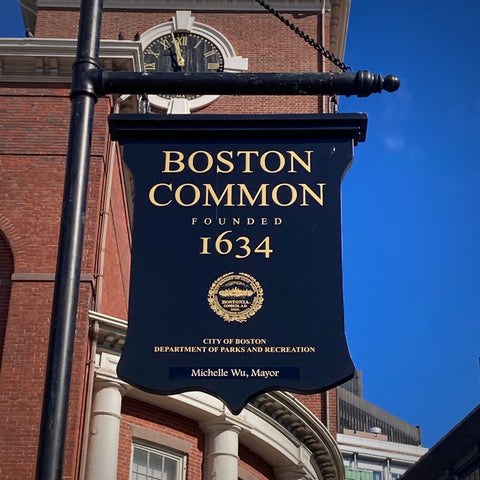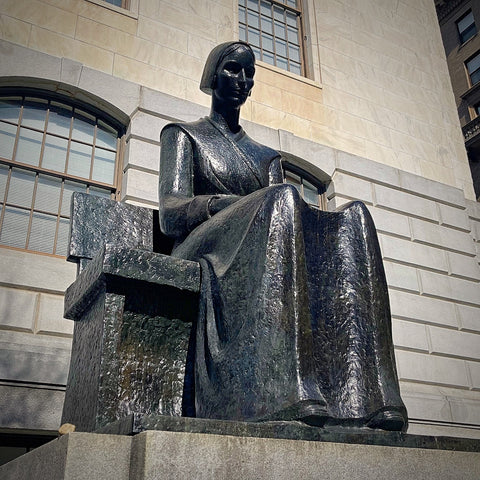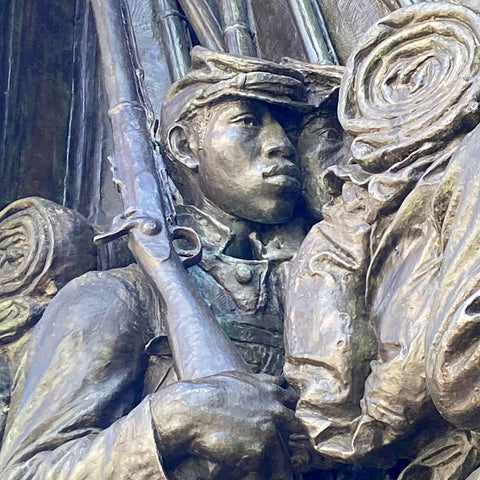
Boston is amongst my very favorite of American cities. My father was born in Chinatown, just a stone's throw from Boston Common. My mother was born across the Charles River in Cambridge. They met at Suffolk University in Downtown Boston. For the first 15 years of my life, we travelled from Honolulu to Boston nearly every summer—"It may be our last chance to see Papa"—where, by the age of nine, I had mastered the Boston Subway (The T) in order to visit the Museum of Science multiple times a week.
I travelled to Boston this week to see the premiere of my husband's ballet, Raymonda, at the Boston Ballet (he designed the scenery and the costumes). Of course, I cannot visit such a historic (and personally relevant) city without taking some time to walk around (and take some pictures).
The fifty acre "Boston Common" was established in 1634 and is the oldest city park in America. Over the years, the Common has been used for various purposes including as a public gathering (and speaking) place, as a grazing pasture, as a mustering site and drilling field for the military, as an execution site and as a burial grounds.

Possibly the most famous of the executed was the Quaker Mary Dyer who was hanged in 1660 from an oak in Boston Common by Massacusetts's Puritan government. Quakers, Catholics and Jews had been banned (on pain of death) in the Massachusetts Bay Colony—by the Puritans who self-righteously purported to "seek religious freedom" in America.
In the 1830's, Boston's mayor banned the cows and sheep—a far less controversial decree—and the Common was thereafter maintained as a conventional urban park space (complete with occasional protests and other civic gatherings). The Common is also well-used by pedestrians, crossing the park on their daily movements through the city.

The Park Street Church (Conservative Congregational) was built in 1809, inspired by one of architect Christopher Wren's London churches. It was the tallest building in the United States for nearly two decades—and an iconic landmark as travelers approached Boston. The church was nicknamed "Brimstone Corner" thanks to the fiery preaching within. In later years, the church was active in the abolitionist movement.

In one corner of Boston Common stands a monument, unveiled in 1897, honoring the men of the 54th Regiment Massachusetts Volunteer Infantry and their leader, Colonel Robert Gould Shaw, an abolitionist. The 54th Regiment, which included two sons of Frederick Douglas, was an African-American regiment lead by white officers (you might remember the film Glory). The sculpture, by American artist Augustus Saint-Gaudens, portrays the men marching down Beacon Street on 28 May 1863. Shaw would be killed less than two months later at Fort Wagner (which protected the Port of Charleston, South Carolina).

Saint-Gaudens depicted 23 enlisted men, each distinctively portrayed by the artist, who hired Black models for the sculpture. Survivors of the 54th Regiment (and newly-freed slaves) contributed and raised the funds to create this work—the first such monument to African-American soldiers in the nation's history.

And just a few blocks away, at Boston's "Downtown Crossing," stands the remains of Boston's historic icon, Filene's Department Store. This Beaux Arts masterpiece was built in 1911-1912, the last major project by the famed Chicago architect, Daniel Burnham. Burnham had built Marshall Fields and the 1893 World's Fair, both in Chicago. He built the Flatiron Building in New York City, Union Station in Washington, DC, and the Selfridges Department Story in London. The façade of the Filene's building is glazed terracotta—in both white and dark green (to resemble cast iron). Although the store is now gone, fortunately, Boston has insisted on saving and restoring this architectural landmark.
Though our Greenwich Village store is now permanently closed, LEO Design is still alive and well! Please visit our on-line store where we continue to sell Handsome Gifts (www.LEOdesignNYC.com).
We also can be found in Canonsburg, Pennsylvania, at The Antique Center of Strabane (www.antiquecenterofstrabane.com).
Or call to arrange to visit our Pittsburgh showroom (by private appointment only). 917-446-4248

